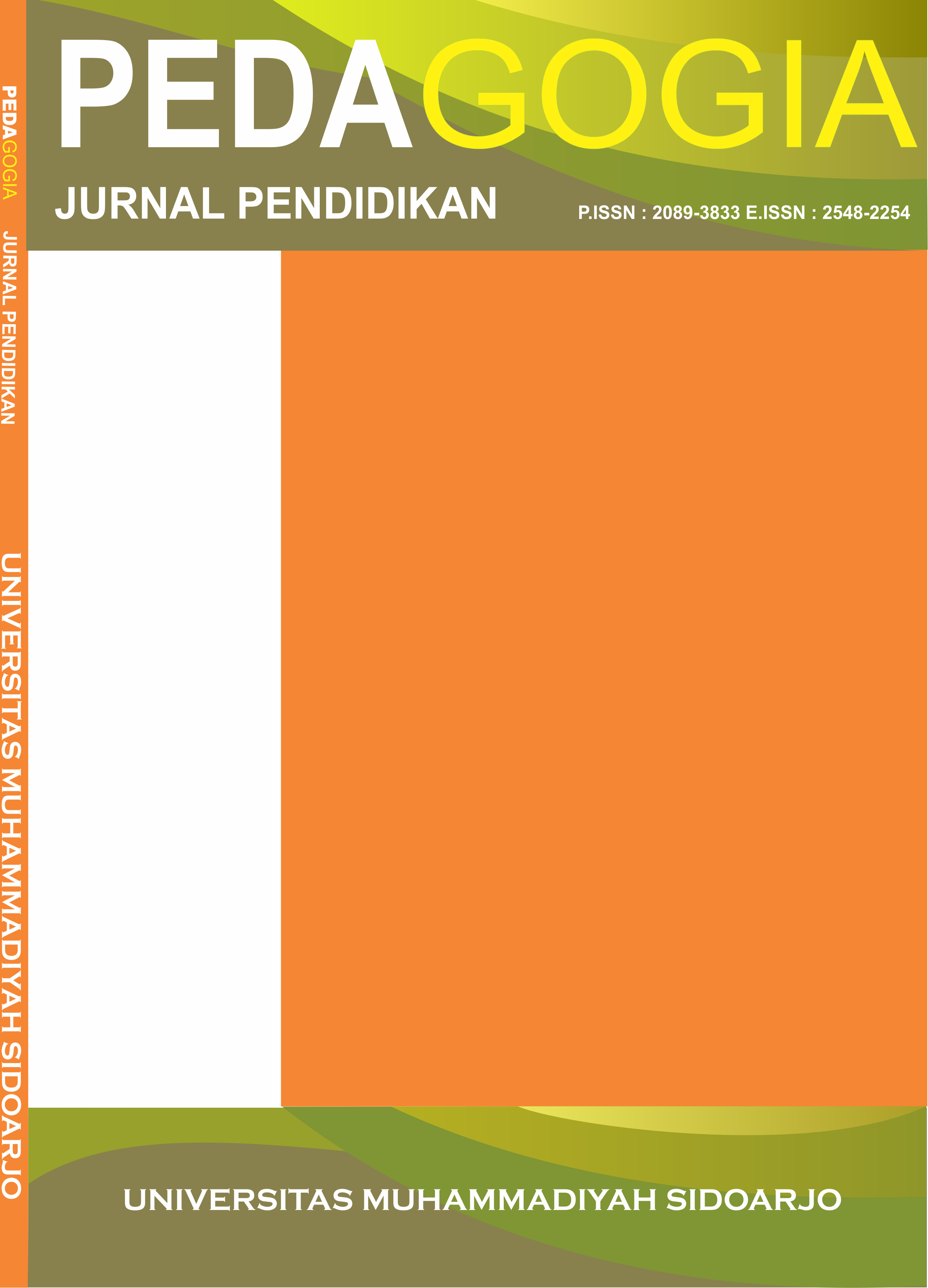Analisis Learning Obstacle Pada Pembelajaran Nilai Tempat Siswa Kelas II SD
Learning Obstacle Analysis on Place Value Learning in Students Class II Elementary School
DOI:
https://doi.org/10.21070/pedagogia.v8i1.1854Keywords:
Learning Obstacle, Place ValueAbstract
The concept of place value is very important taught before student learned addition and subtraction.However, in reality student has learning obstacle when they learn place value. The aim of this research is to analize the student obstacles in 3 digit place value. This research is a qualitative research and involved 50 students of grade 2 elementary school. From the analysis of the data, i.e., student test results and student interview, the result is we found two obstacles, ie.,didactical and epistemological obstacle. Didacticalobstacleis caused by using horizontal representation strategy of place value in 2013 curriculum textbookdid not help student to interpret number from the point of view place value, so that when the student must sum the result of horizontal representation strategy, students only combine the number symbol instead of summing numbers. Another didacticalobstacleis examples and questions about place value in 2013 curriculum book are less varied that indirectly raises epistemological obstacle which lead to examples and questions are given by teacher are not varied.This finding needs to be followed up by conducting development research that can reduce learning obstacle that have been discoveredReferences
Astuti, I. et al. (2017). Tema 1 Hidup Rukun Buku Tem- atik Terpadu Kurikulum 2013: Buku Guru SD /MI Kelas 2 (Jakarta: Pusat Kurikulum dan Perbukuan Kemendikbud)
Boulton-Lewis, G. (1992). The Processing Loads of Young Children’s and Teacher’s Representations of Place Value and Implications for. Teaching Mathematics Education Research Journal 4, 1–23
Brosseau, G. (1997). Theory of Didactical Situations. In Mathematics (New York: Kluwer Academic Publishers) Dalyono (2012). Psikologi Pendidikan (Jakarta: Rineka Cipta) Hamalik, O. (2015). Kurikulum dan Pembelajaran (Jakarta: Bumi Aksara)
Negoro, S. T. and Harahap, B. (1983). Ensiklopedia Matem- atika (Jakarta: Ghalia Indonesia)
Payne, J. N. and Huinker, D. M. (1993). Early Number and Numeration (Reston, VA: National Council of Teachers of Mathematics)
Ruseffendi, E. T. (2006). Pengantar Kepada Membantu Guru Mengembangkan Kompetensinya dalam Pengajaran Matematika untuk meningkatkan CBSA (Bandung: Tar- sito)
Troutman, A. P. and Lichtenberg, B. K. (1991). Mathematics A Good Beginning: Strategies for Teaching Children (Cal- ifornia: Wadsworth)
Downloads
Published
How to Cite
Issue
Section
License
Authors retain copyright and grant the journal right of first publication with the work simultaneously licensed under a Creative Commons Attribution 4.0 International License that allows others to share the work with an acknowledgement of the work's authorship and initial publication in this journal.








